Beautiful flowers bloom every season in Japan, for example, rapeseed flowers and tulips in spring, sunflowers in summer, and cosmos in autumn. The flower fields are places where you can discover beautiful landscapes that can only be appreciated during each season.
Seeing the colorful flowers spread all over, you may feel like you’ve lost your way into the picture book world. We will introduce recommended flower fields throughout the country where you can enjoy the special scenery created by nature.
Farm Tomita in Hokkaido
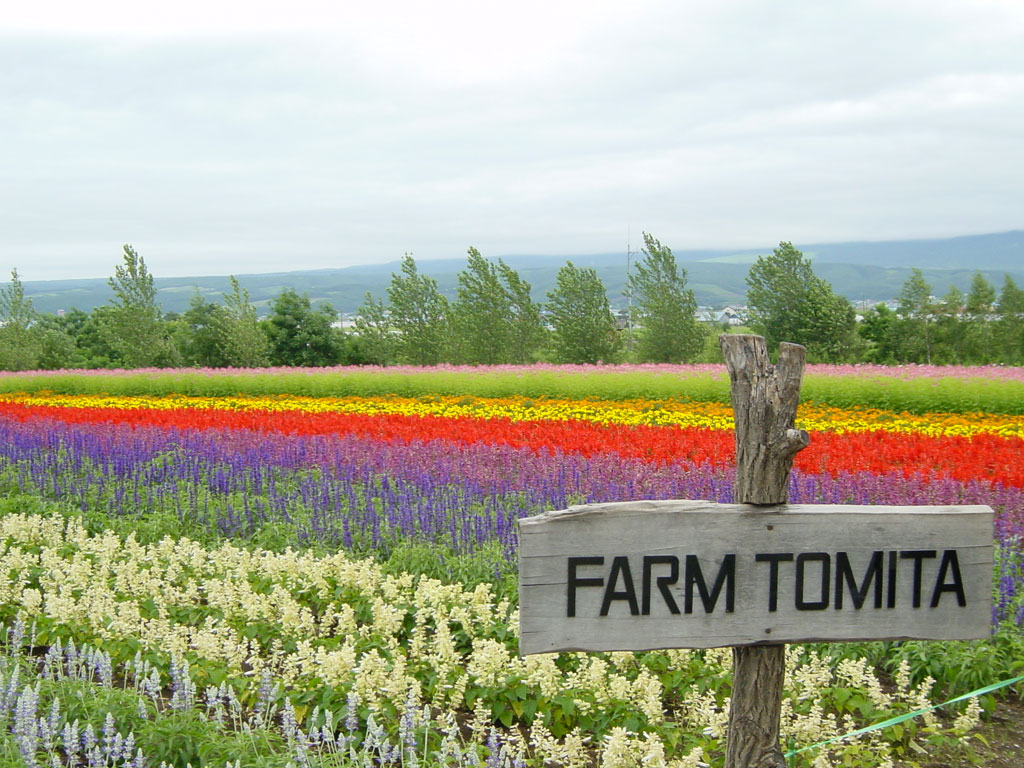 Image source : http://photo.hokkaido-blog.com/html/02/shuusainohatake.html
Image source : http://photo.hokkaido-blog.com/html/02/shuusainohatake.html
The feature of the flower fields in Hokkaido are the overwhelming size that makes use of the vast land compared to other areas in Japan. Among the many flower fields, we recommend the Farm Tomita, where lavenders are in full bloom in July.
In there, yellow, red, white, green, and bright yellow flowers bloom beautifully in a vast field, and lavender flowers stand out in them.
There are rest areas such as “Popuri House”, “Perfume House”, “Flower House”, “Distillation House”, “Poppy House” where you can observe the preparation of perfume (reservation required). Souvenirs are also available.
Information
Farm Tomita
Address : Hokkaido Sorachi-gun Nakafurano-cho character Nakafurano base line north 15
Tel : 0167-39-3939
Business hours : Refer to each store page (flower fields and parking lots are open 24 hours)
Admission fee : Free
Web site : https://www.farm-tomita.co.jp/
Access : 25 minute walk from Nakafurano Station (During the lavender season, a 7-minute walk from the Norocco Lavender Batake Station)
Map :
Michinoku Hydrangea Garden in Iwate
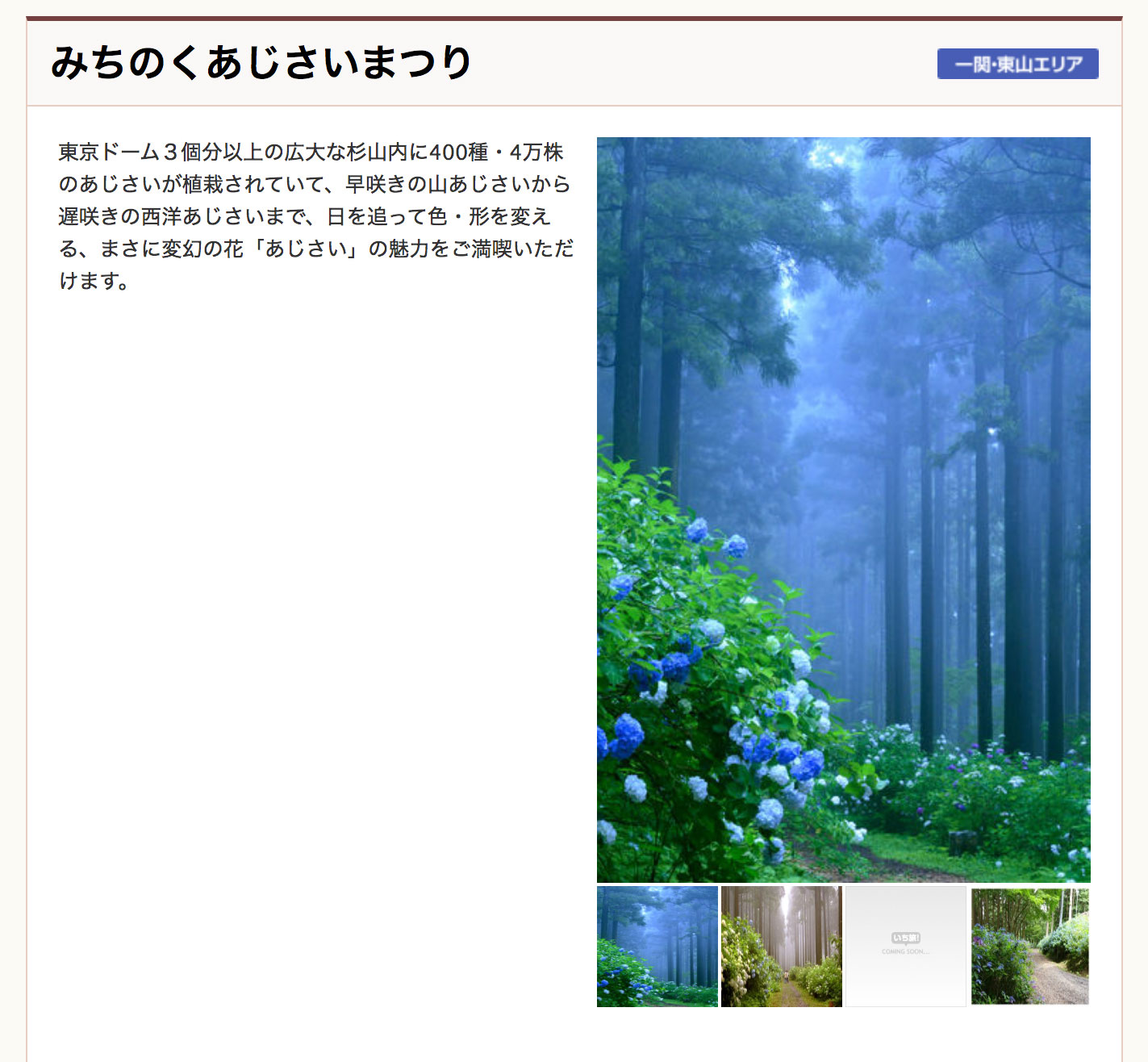
Image source : https://www.ichitabi.jp/event/data.php?no=82&m=6
In the Tohoku area, spring flowers begin to bloom a little later than in the Kanto region.
In particular, “Michinoku Hydrangea Garden” where you can enjoy hydrangea on a walking path of about 2 km, in addition to tulip, leaf flower field, sunflower field, is especially recommended.
It boasts one of the largest flower fileds in the Tohoku region, and usually opens around the first day of July to coincide with the blooming of hydrangeas.
There are approximately 40,000 hydrangea plants of about 400 species.
From the early blooming hydrangea to the late blooming Western hydrangea, you can enjoy the magical flower “hydrangea” that changes color and shape over time, enjoying the forest bathing there.
We recommend that you visit there as a hike with your familiar shoes.
Information
Michinoku Hydrangea Garden
Address : 111 Harazawa, Maikawa, Ichinoseki, Iwate Prefecture
Business hours : 9: 00-17: 00 (admission until 16:30)Open every year only during the hydrangea season from late June to late July
Admission fee : Admission fee: 1,000 yen for adults, 200 yen for children (elementary and junior high school students) Cart ride fee: 700 yen per person (reservation required)
Access :
[Bus] Ichinoseki Station West Exit, Platform 7: Route bus, Iwate Prefectural Transportation “Geibikei Line” → Get off at “Mizukami” bus stop (32 minutes) → About 15 minutes on foot
[Car] About 30 minutes by car from Ichinoseki IC on the Tohoku Expressway
About 10 minutes by car from “Geibikei” (about 5.8km)
Map :
Hitachi Seaside Park in Ibaraki
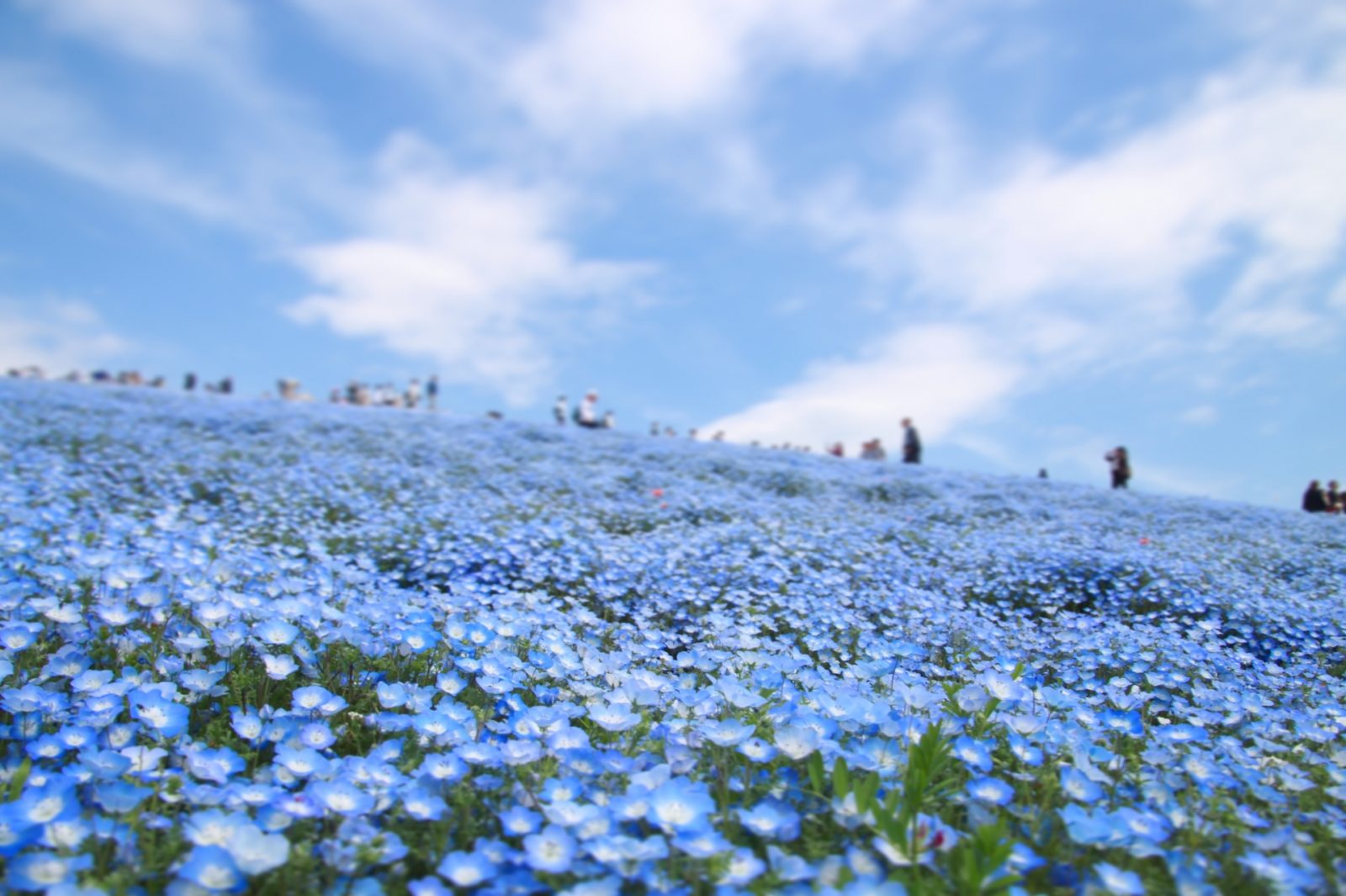
Hitachi Seaside Park, Ibaraki Prefecture is famous as a famous spot for Nemophila. From late March to mid-May, narcissus, tulips and nemophila bloom one after another, like a spring flower relay.
There is also a cycling course in the large garden of about 200ha, so you can explore the vast garden by bicycle. A particularly recommended time is from mid-April to early May, when about 4.5 million nemophila dye Miharashi no Oka in a blue color, and the view is magnificent.
If you want to visit there, make sure to aim for this nemophila season.
Information
Hitachi Seaside Park
Address : 605-4 Onuma, Watari-ji, Hitachinaka-shi, Ibaraki
Tel : 029-265-9001
Business hours : 9: 30 ~ Closed depending on the season (There are times when the park is not open, so please also check the website)
Admission fee :
Adults (high school and older) 450 yen, junior high school and younger free
(Other group rates, silver (over 65 years old) rates, free days available)
Web site : https://hitachikaihin.jp/
Access :
[bus]
・ About 15 minutes from JR Katsuta Station East Exit Platform 2 to Kaihin Koen West Exit or 20 minutes to Kaihin Koen South Exit
・ Approximately 30 minutes from JR Tokai Station East Exit No. 1 to Kaihin Park West Exit
[car]
・ Kita Kanto Expressway-Hitachi Naka Toll Road “Hitachi Kaihin Park IC”
・ Approximately 15km from Hitachi Minamiota IC on Joban Expressway, approximately 13km from Tokai Smart IC
Map :
Ashikaga Flower Park in Tochigi

Ashikaga Flower Park was selected as one of CNN’s “10 Dream Travel Destinations in 2014” and attracted attention.
There are over 350 wisteria, including Oto wisteria, which is about 150 years old, a white wisteria tunnel, and a bright yellow beautiful kibana wisteria tunnel.
During the month of April to mid-May, when the best time to see them is, the “Fujinohana Story-Oto Festival” is held, and it is a particularly busy time of the year.
The flower field is recommended not only in the daytime but also in the night. The night illuminations are certified as a Japan Night View Heritage.
Eight themes are set throughout the year, and you can enjoy various expressions depending on the season you visit.
Information
Ashikaga Flower Park
Address : 607, Hamamachi, Ashikaga City, Tochigi Prefecture
Tel : 0284-91-4939
Business hours : Opening hours: Varies depending on the season and event held (see website)
Admission fee : Varies depending on how the flowers bloom (see HP)
Web site : https://www.ashikaga.co.jp/
Access :
[Train] About 3 minutes on foot from JR Ryomo Line “Ashikaga Flower Park” Station
[car]
・ From Tohoku Expressway “Sano Fujioka IC” Route 50 Maebashi, Ashikaga direction (about 18 minutes)
・ North Kanto Expressway
From “Ota Kiryu IC”, proceed to Route 50 via Ashikaga / Koyama via Route 122 (about 20 minutes)
From Ashikaga IC, proceed to Sano via Prefectural Road 67 via National Route 293 (about 15 minutes)
From “Sano Tanuma IC”, proceed to Ashikaga via Prefectural Road No. 16 (approximately 12 minutes)
Map :
Lake Yamanaka Flower Park in Yamanashi
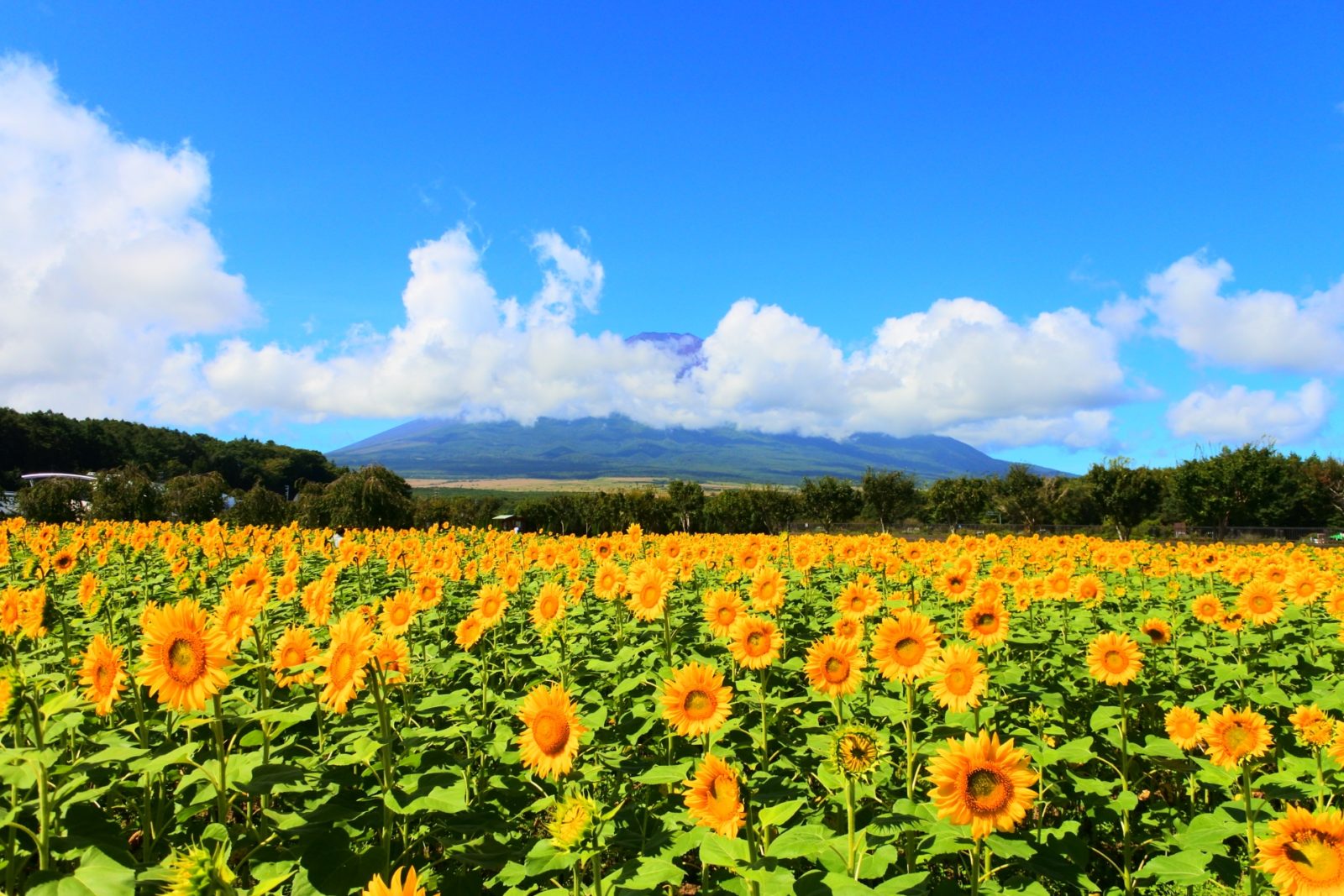
Hana no Miyako Park is a 300,000-square-meter site on a 1000-meter high plateau on the shore of the lake closest to Mt. Fuji, and it is full of seasonal flowers.
In there, you can enjoy the collaboration between magnificent Mount Fuji and tulips and sunflowers.
From late August to mid-October, about 5 million varieties of Kibana cosmos and cosmos are in full bloom in the flower field and plantation area of about 30 square meters.
In the latter half of the season, if you are lucky, you may be able to see the cosmos field in full bloom and Mt. Fuji with the first snow at the same time (the first snow is usually from late September to early October).
When you are hungry, you can spend a delicious time at the restaurant “Hanaan”.
Information
Lake Yamanaka Flower Park
Address : 1650 Yamanakako, Yamanakako Village, Minamitsuru-gun, Yamanashi Prefecture
Tel : 0555-62-5587
Business hours : Varies depending on the season
Admission fee : There are paid areas depending on the season (300 yen for adults, 120 yen for elementary and junior high school students)
Web site : http://hananomiyakokouen.jp/
Access :
[bus]
・ Approximately 30 minutes from Fujikyu Line “Fujisan Station” (tour bus Fujiko-go)
・ About 50 minutes from JR Gotemba Line “Gotemba Station”
[car]
・ 5 minutes from Higashi Fuji Five Lakes Road “Yamanakako IC”
Map :
Conclusion
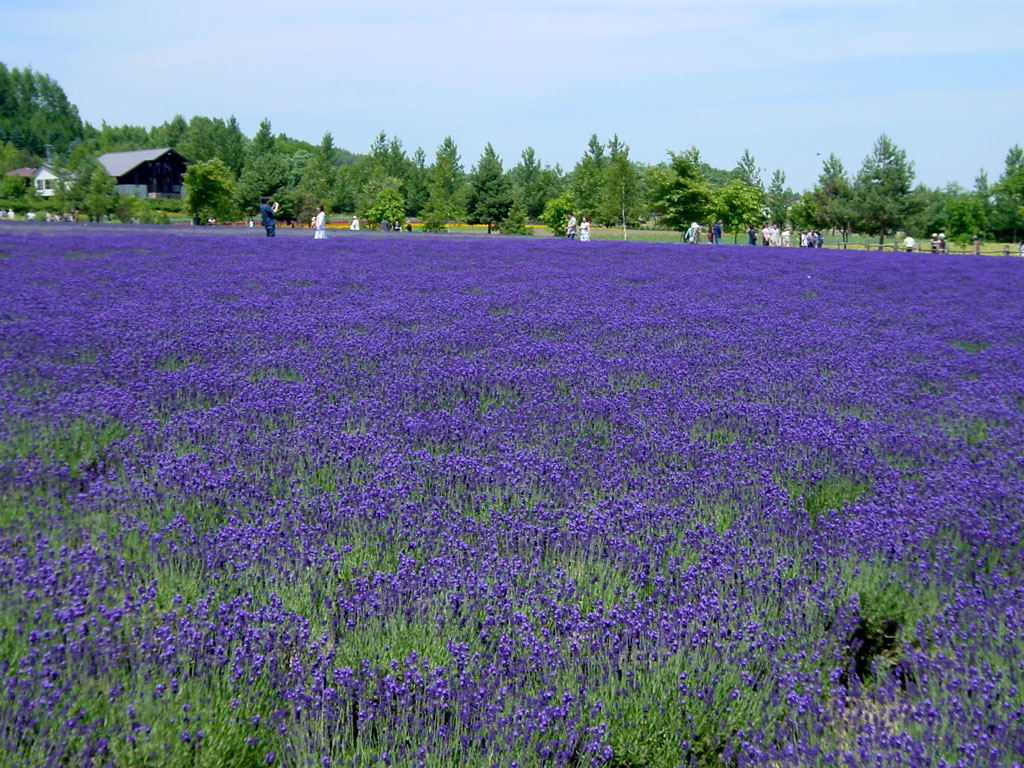
We introduced flower fields that we especially recommend in Hokkaido, Tohoku, Kanto, and Chubu areas. There are many beautiful flower fields in the area that could not be introduced yet.
Please refer to it when you visit. The second part introduces flower gardens from Chubu to Kyushu and Okinawa regions. Check below!


